The Battle of Cyzicus took place in May or June 410 BC during the Peloponnesian War. During the battle, an Athenian fleet commanded by Alcibiades, Thrasybulus, and Theramenes routed and destroyed a Spartan fleet commanded by Mindarus. The victory allowed Athens to recover control over a number of cities in the Hellespont over the next year. In the wake of their defeat, the Spartans made a peace offer, which the Athenians rejected.
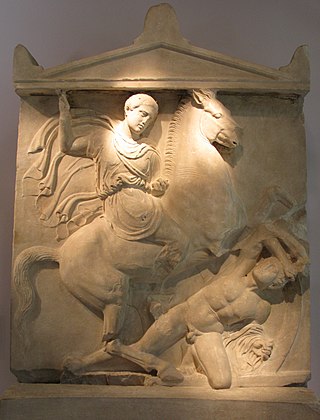
The Corinthian War was a conflict in ancient Greece which pitted Sparta against a coalition of city-states comprising Thebes, Athens, Corinth and Argos, backed by the Achaemenid Empire. The war was caused by dissatisfaction with Spartan imperialism in the aftermath of the Peloponnesian War, both from Athens, the defeated side in that conflict, and from Sparta's former allies, Corinth and Thebes, who had not been properly rewarded. Taking advantage of the fact that the Spartan king Agesilaus II was away campaigning in Asia against the Achaemenid Empire, Thebes, Athens, Corinth and Argos forged an alliance in 395 BC with the goal of ending Spartan hegemony over Greece; the allies' war council was located in Corinth, which gave its name to the war. By the end of the conflict, the allies had failed to end Spartan hegemony over Greece, although Sparta was weakened by the war.

The Battle of Mantinea was fought on 4 July 362 BC between the Thebans, led by Epaminondas and supported by the Arcadians, Argives, Messenians, Thessalians, and the Boeotian league against the Spartans, led by King Agesilaus II and supported by the Eleans, Athenians, Euboeans, and Mantineans. The battle was to determine which of the two alliances would dominate Greece. However, the death of Epaminondas and his intended successors would cost Thebes the military leadership and initiative to maintain Theban supremacy in the region. Similarly, the Spartans were weakened by yet another defeat and loss of troops. Epaminondas' death coupled with the impact on the Spartans of yet another defeat weakened both alliances, and paved the way for Macedonian conquest led by Philip II of Macedon.
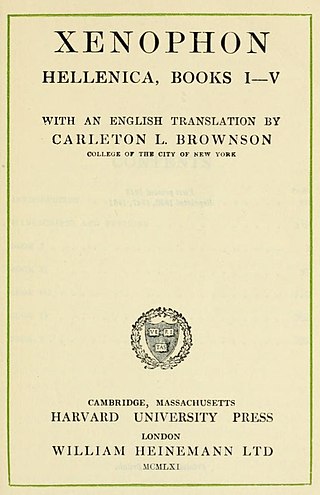
Hellenica simply means writings on Greek (Hellenic) subjects. Several histories of 4th-century Greece, written in the mould of Thucydides or straying from it, have borne the conventional Latin title Hellenica. The surviving Hellenica is an important work of the Ancient Greek writer Xenophon and one of the principal sources for the last seven years of the Peloponnesian War not covered by Thucydides, as well as the war's aftermath.
Cebrene, also spelled Cebren, was an ancient Greek city in the middle Skamander valley in the Troad region of Anatolia. According to some scholars, the city's name was changed to Antiocheia in the Troad for a period during the 3rd century BCE. Its archaeological remains have been located on Çal Dağ in the forested foothills of Mount Ida, approximately 7 km to the south of the course of the Skamander. The site was first identified by the English amateur archaeologist Frank Calvert in 1860.

The Second Athenian League was a maritime confederation of Greek city-states that existed from 378 to 355 BC under the leadership (hegemony) of Athens. The alliance represented a partial revival of the Delian League, which had been disbanded in 404 BC following the defeat of Athens in the Peloponnesian War. The new League was centered in the Aegean and included over 60 states, among which were Kos, Mytilene, Rhodes, and Byzantium. It was primarily formed as a defensive alliance against Sparta and secondly the Persian Empire. The new League's main objective was to preserve peace in Greece and counterbalance Sparta's growing hegemony and aggression. The League largely revived Athenian influence in the Greek world, reestablishing it as the strongest naval power in the eastern Mediterranean. This time, Athens made conscious efforts to avoid the strict terms that had eventually rendered the previous Delian League unpopular. The alliance lasted until 355 BC, when most of the allied cities became independent following the Social War that broke out in 357 BC.
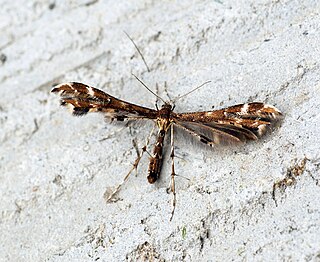
Capperia britanniodactylus, also known as the wood sage plume is a moth of the family Pterophoridae, found in Europe. It was first described by Charles Stuart Gregson in 1869.
Larissa, was an ancient Greek city in the south-west of the Troad region of Anatolia. Its surrounding territory was known in Greek as the Λαρισσαῖα (Larissaia). It has been located on a small rise by the coast now known as Limantepe, about 3.5 km from the village of Kösedere to the north-east and 3 km from the village of Babadere to the east, in the Ayvacık district of Çanakkale province, Turkey. As with other Greek toponyms containing the consonantal string -ss-, spellings that drop one 's' exist alongside those that retain both in the ancient literary sources. Larisa in the Troad should not be confused with 'Aeolian' Larissa, near Menemen, or with 'Ionian' Larissa in İzmir province.
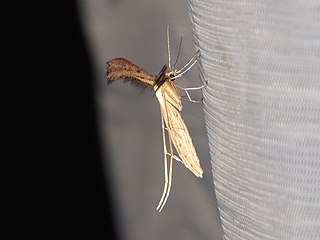
Pterophorinae is a subfamily of moths in the family Pterophoridae.
Capperia fusca is a moth of the family Pterophoridae. It is found in Spain, France, Belgium, Germany, Switzerland, Italy, Austria, Croatia, the Czech Republic, Poland, Slovakia, Hungary, Romania, Bulgaria, North Macedonia, Greece and southern Russia. It is also known from Turkey.
Capperia maratonica is a moth of the family Pterophoridae. It is found in Spain, France, Italy, Sardinia, Croatia, Serbia and Montenegro, Bulgaria, Romania, Ukraine, North Macedonia, Greece and Cyprus. It has also been recorded from the Palestinian Territories.
Capperia washbourni is a moth of the family Pterophoridae. It is found in Greece, Asia Minor, Syria and the Palestinian Territories.
Capperia zelleri is a moth of the family Pterophoridae found on Sicily.
Capperia loranus is a moth of the family Pterophoridae. It is found in Spain, France, Belgium, Germany, Italy, Austria, the Czech Republic and Slovakia.
Capperia evansi is a moth of the family Pterophoridae. It is found in Canada.
Iris hellenica is a plant species in the genus Iris and the subgenus Iris. It is a rhizomatous perennial, from Saitas Mountain, in the Peloponnese Region of Greece. It has grey-green, sickle-shaped leaves, a tall slender stem, 2–3 white, lavender-blue, lilac or purple flowers and orange/purple beards. It was thought once to be a hybrid species of Iris germanica which also grows in the same area, before being separated into 2 species. It has only recently been published and is rarely cultivated as an ornamental plant in temperate regions.
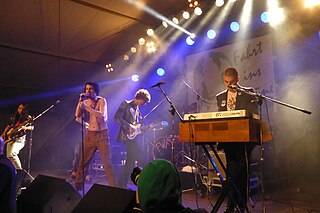
Fat White Family are an English rock band, formed in 2011 in Peckham, South London.
Matthias Adamczewski is a German sailor. He competed in the 1988 Summer Olympics.

Warmduscher is a British post-punk band formed in 2014 in London. The group is currently affiliated with the independent record label Bella Union.







